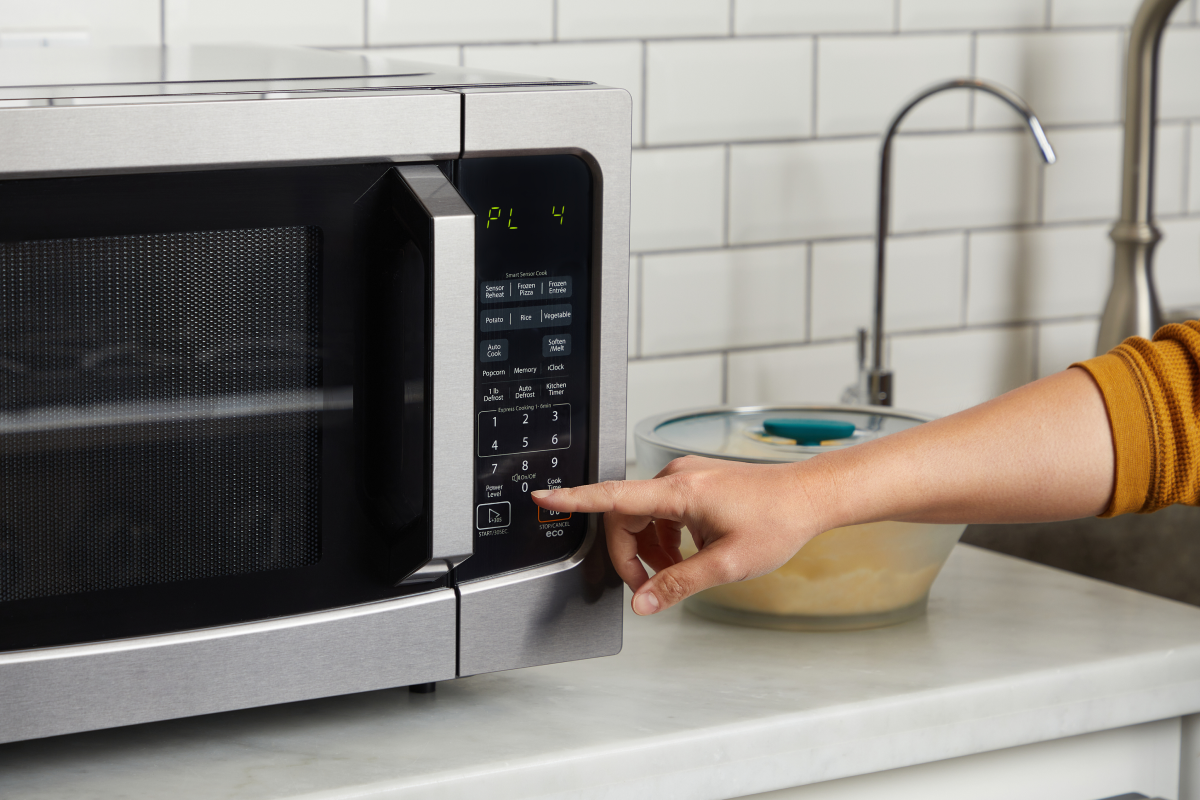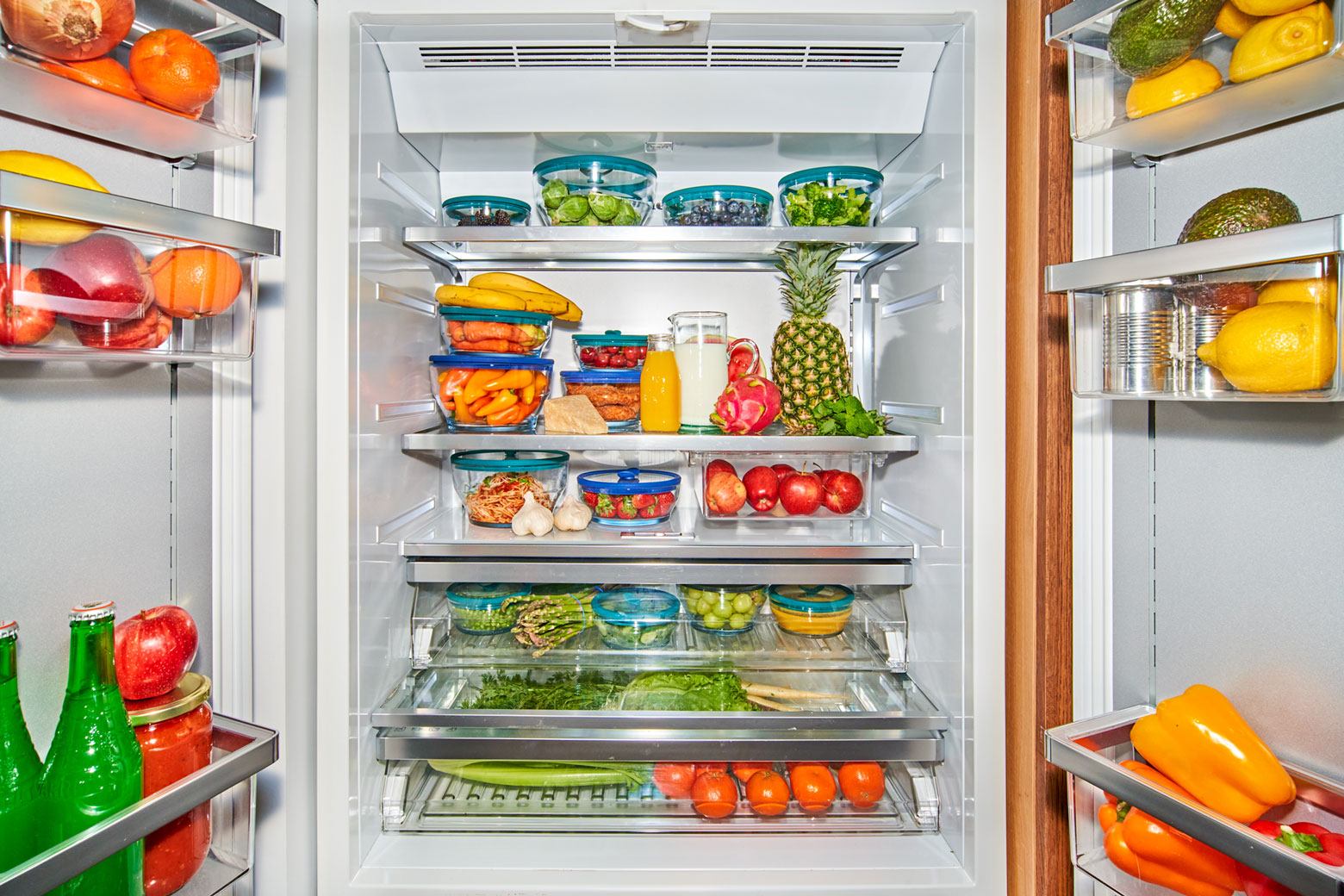You’ve probably lived much of your life hitting the “express” button on the microwave, a shortcut that usually results in 30 second bursts of full-power cooking. You probably press it a few times to get the time you want — 30 seconds to heat up some coffee, 1:30 to get your pasta leftovers hot. It’s the epitome of convenient cooking, which is very much the microwave’s brand.
But there’s another magic button you may be ignoring completely: the power level button.
Think of adjusting your power level similarly to adjusting the heat on your stove or your oven. You wouldn’t cook everything under your broiler or on high heat on your stove. The same thing goes for the microwave. Certain foods, like grains and eggs, need a gentler heat to achieve the texture you want and avoid overflowing or burning. It can also help heat certain foods more evenly. But how does that work?
How do power levels on microwaves work?
Microwaves (the appliance) use a constant stream of microwaves (the actual waves) to cook food quickly. They heat water molecules up fast, and then keep heating them at the same rate (more on that here!). All microwaves default to cook at full power (Power Level 10). However, microwave producers know that there needs to be a way to cook certain foods more gently. This is where your power level button kicks in.
The power level function actually turns the microwaves off for short periods of time to allow the food to cook at a slower rate. This “off” period allows the residual heat that’s generated in your food from the full-power cooking to continue cooking your food without the more intense direct microwave heat. So when you set your microwave to Power Level 5, or 50%, there are waves bouncing around inside only 50% of the time, allowing the food to cook more gently.
You can also do the math according to your microwave’s wattage. For instance, a 1000-watt microwave set at Power Level 5 (50%) will cook food at the rate that 500 watts would.

This mushroom risotto is cooked at Power Level 3
What kind of food needs to be cooked at a lower power level in the microwave?
There are many reasons to cook some foods at a lower power level in the microwave. Here are some of the foods you’ll want to cook more gently by adjusting your microwave’s power level:
1. Grains (Power Level 3-6)
Grains like rice and quinoa are best when they are gently steamed, which is why they need to be cooked at a lower power level. Starchy grains like pasta and noodles may also bubble over and burn at full power in the microwave, which creates a total mess and results in inedible food!
2. Eggs (Power Level 4-10)
You can definitely cook some eggs at full power in the microwave (especially eggs cooked in a more liquidy substance, like poached eggs or shakshuka!). However, some preparations are much better with a softer texture that is the result of gentle cooking. Silky Chinese egg custard and this fabulous frittata both benefit from gentle cooking, which helps the eggs set without making them rubbery.
3. Dairy-based foods (Power Level 4-5)
Just like on the stove, dairy should be heated up gently if cooking for a longer period of time to avoid separating or burning. For instance, cheesecake is cooked at PL 4 to maintain its shiny, silky texture and not scorch the cheese and cream! Simmering in cream or milk also works this way, like in this recipe for milk-poached chicken or creamy Tuscan chicken.
4. Defrosting frozen food (Power Level 1-4)
Though microwaves work by vibrating molecules like water to generate heat, the appliance can only do that if water is in liquid form! When water is frozen into ice, microwaves aren’t able to vibrate the water molecules. Then how do microwaves defrost frozen food at all?
When you take frozen food out of the freezer, the outermost layer of water immediately begins to thaw. The microwave can penetrate that thin layer of water, heating it up. That heat generated from the thin layer of liquid water then heats up the next layer of ice.
Using a lower power level to defrost food helps this process happen more efficiently, allowing that residual heat to transfer to the ice and melt it. If the microwave is at full power, it will evaporate too much of that water layer for it to efficiently penetrate the ice! Learn more about safely thawing and defrosting food by reading this blog post.
What are the different power levels on a microwave?
Microwaves list power levels in different ways. Here’s a cheat sheet to help you adjust:
Power Level (PL) 10 = 100% = High (default)
Power Level (PL) 9 = 90% = High
Power Level (PL) 8 = 80% = Medium - High
Power Level (PL) 7 = 70% = Medium - High
Power Level (PL) 6 = 60% = Medium
Power Level (PL) 5 = 50% = Medium
Power Level (PL) 4 = 40% = Medium - Low
Power Level (PL) 3 = 30% = Medium - Low
Power Level (PL) 2 = 20% = Low
Power Level (PL) 1 = 10% = Low

Our classic cheesecake recipe is cooked at Power Level 4.
How to adjust the power level on your microwave
We know that the first time you try to figure out how to adjust your microwave’s power level can be frustrating. In fact, Anyday founder Steph Chen demonstrates how every microwave is different in this video! If you have your microwave’s manual (or can look it up online), you’ll be able to easily determine how to adjust the power level. If not, we have a few tips for figuring it out.
1. Try the power level button first
We always hit the power level button first to try changing a microwave’s power level. If it flashes a “PL10” or something similar, you know you can adjust from there! Some microwaves have you hit the power level button again to bring it down one level at a time; others will have you enter the level directly by using the number pads. For ease, try hitting the power level button again first.
2. If that doesn’t work, enter your cook time
If when you hit the power level button, nothing happens, then you can try entering in a cook time. Some microwaves have you enter the cook time before determining the power level. Once you’ve entered the cook time, hit the power level button, and you should be able to change the power level.
3. Hit “start”
When you’ve determined both the cook time and the power level, hit “start” to begin cooking! You’ll know your microwave is on a lower power level by the sound it makes: When it’s on full power, the hum is constant. But when your microwave is cooking at a lower power level, you’ll notice a tone change in the microwave’s hum at certain points in the cooking process, which signals that it’s intermittently turning itself on and off.
If you’re not hearing that tone change, you might want to make sure you did actually change your power level. (The one exception to this tone-change rule is for inverter microwaves, which will still maintain a constant tone.)
How to change the power level on common microwave brand models
Still not sure how to change the power level on your microwave? Here are a few ways to change the power level of microwaves from common brands:
GE
1. Press Time Cook, Micro Cook or Cook Time.
2. Enter the cooking time in minutes and seconds on the number pads.
3. Press the Power Level button.
4. Select the power level between 1-10 using the number pads (Default is 10 which is the highest power level).
5. Press the Start/Pause button.
GE “selector dial” models
1. Set the cook time.
2. Press the Power Level button.
3. Turn the dial clockwise to increase or counter-clockwise to decrease the power level.
4. Press the dial to enter.
5. Press the Start/Pause button.
Toshiba
1. Press Time Cook
2. Use number pads to enter the cooking time.
3. Press the Power Level button, PL10 will flash.
4. Press number pads 0 through 9 to select a different power level.
5. Press the Start button to start cooking.
Panasonic
1. Press the Power Level button until the desired power level appears in the display window.
2. Set Cooking Time using number pads.
3. Press the Start button.
Whirlpool
1. Press the cook time button.
2. Enter the length of time to cook.
3. Press the Power Level button.
4. Enter the desired power level with the number pads.
5. Press the Start button.
Sharp
1. Enter the cook time using the number pads.2. Press the power level button until the desired power level appears in the display window.
3. Press the Start button.





Share:
The Truth About Metal in the Microwave
How to Microwave Perfect Rice Every Time